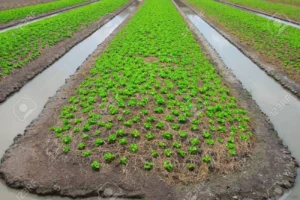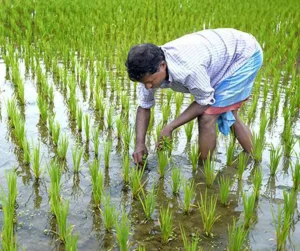Back to: Pre Vocational Studies Primary 5
Welcome to class!
Hello, my wonderful student! It’s great to have you back and ready for another learning adventure. Today, we’re going to talk about “planting activities.” This is a very important part of farming because it’s when the seeds or seedlings actually go into the ground! It’s like the main event after all the preparations. Are you ready to learn more? Let’s begin!
Meaning of Planting Activities

We’ve talked about pre-planting operations, which are all the things farmers do before planting. Now, planting activities are the actions taken to put the seeds or seedlings into the prepared soil so they can grow into healthy crops.
Here are some key planting activities:

- Seed Selection: Before planting, farmers carefully choose the seeds they will use. They select healthy, high-quality seeds that are likely to grow well and produce a good harvest. They might choose seeds that are resistant to certain diseases or that grow well in their specific climate. It’s like choosing the best ingredients for a recipe to make sure the food tastes delicious.
- Seed Treatment: Sometimes, farmers treat the seeds before planting to protect them from diseases and pests. This might involve coating the seeds with special chemicals or soaking them in water. It’s like giving yourself a vaccination to protect you from getting sick.
- Planting Method: There are different ways to plant seeds, and farmers choose the method that is best for their specific crop and conditions. Here are a few common methods:
- Broadcasting: This involves scattering seeds over a large area of land. It’s often used for crops like rice and some grasses. Imagine throwing a handful of birdseed on the ground – that’s similar to broadcasting.
- Drilling: This involves planting seeds in rows using a special machine called a seed drill. This method ensures that the seeds are planted at the correct depth and spacing. It’s like using a ruler to draw straight lines.
- Dibbling: This involves making small holes in the soil and then dropping seeds into the holes by hand. It’s often used for larger seeds like maize and beans. Imagine poking small holes in the ground with your finger and dropping a seed in each hole.
- Transplanting: This involves growing seedlings in a nursery or seedbed first and then carefully moving them to the field. This method is often used for crops like tomatoes, peppers, and onions. It’s like starting a small plant in a pot indoors and then moving it to the garden once it’s bigger.
- Planting Depth and Spacing: It’s very important to plant seeds at the correct depth and spacing. If seeds are planted too deep, they may not be able to reach the surface and grow. If they are planted too shallow, they may dry out or be eaten by birds. The spacing between plants is also important. If plants are too close together, they will compete for water, nutrients, and sunlight. It’s like giving each person enough space at a table to eat comfortably.
Let’s use an example. Imagine a farmer wants to plant maize. They choose healthy maize seeds and might treat them with a special coating to protect them from insects. They use a dibbling method to plant the seeds, making small holes in the soil and dropping a few seeds in each hole. They make sure to plant the seeds at the correct depth and spacing so that each plant has enough room to grow.
Summary
So, to summarize, planting activities are the actions taken to put seeds or seedlings into the ground. These include seed selection, seed treatment, choosing the right planting method (like broadcasting, drilling, dibbling, or transplanting), and ensuring the correct planting depth and spacing.
Evaluation
- Can you name two planting methods?
- Can you explain why planting depth and spacing are important?
Excellent! You’re doing a fantastic job! I’m so proud of your learning.
We have come to the end of this lesson.
In the next class, we shall be talking about Family Relationship and Family Tree.
In case you require further assistance or have any questions, feel free to ask in the comment section below, and trust us to respond as soon as possible. See you in the next class!
